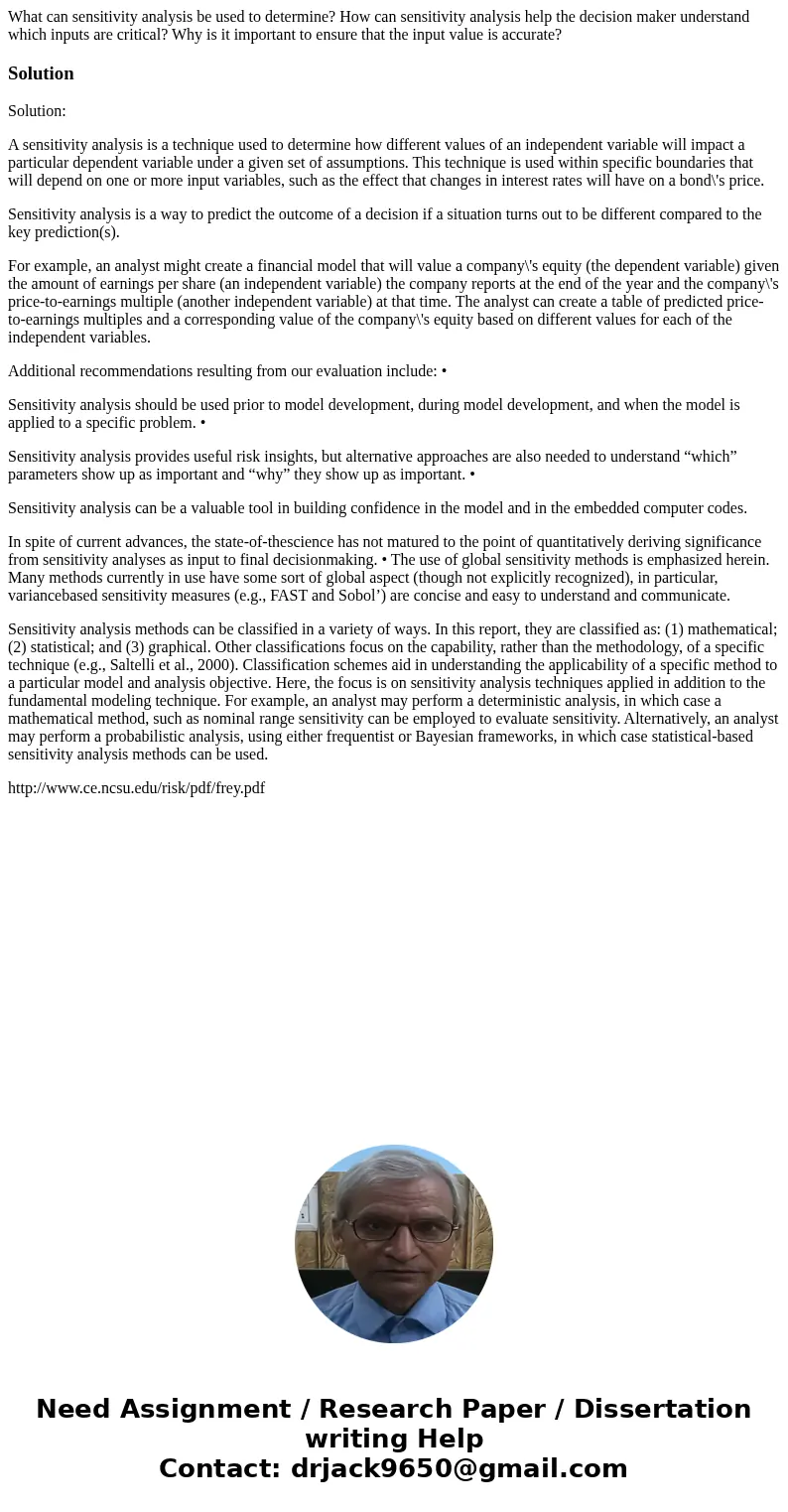What can sensitivity analysis be used to determine How can s
What can sensitivity analysis be used to determine? How can sensitivity analysis help the decision maker understand which inputs are critical? Why is it important to ensure that the input value is accurate?
Solution
Solution:
A sensitivity analysis is a technique used to determine how different values of an independent variable will impact a particular dependent variable under a given set of assumptions. This technique is used within specific boundaries that will depend on one or more input variables, such as the effect that changes in interest rates will have on a bond\'s price.
Sensitivity analysis is a way to predict the outcome of a decision if a situation turns out to be different compared to the key prediction(s).
For example, an analyst might create a financial model that will value a company\'s equity (the dependent variable) given the amount of earnings per share (an independent variable) the company reports at the end of the year and the company\'s price-to-earnings multiple (another independent variable) at that time. The analyst can create a table of predicted price-to-earnings multiples and a corresponding value of the company\'s equity based on different values for each of the independent variables.
Additional recommendations resulting from our evaluation include: •
Sensitivity analysis should be used prior to model development, during model development, and when the model is applied to a specific problem. •
Sensitivity analysis provides useful risk insights, but alternative approaches are also needed to understand “which” parameters show up as important and “why” they show up as important. •
Sensitivity analysis can be a valuable tool in building confidence in the model and in the embedded computer codes.
In spite of current advances, the state-of-thescience has not matured to the point of quantitatively deriving significance from sensitivity analyses as input to final decisionmaking. • The use of global sensitivity methods is emphasized herein. Many methods currently in use have some sort of global aspect (though not explicitly recognized), in particular, variancebased sensitivity measures (e.g., FAST and Sobol’) are concise and easy to understand and communicate.
Sensitivity analysis methods can be classified in a variety of ways. In this report, they are classified as: (1) mathematical; (2) statistical; and (3) graphical. Other classifications focus on the capability, rather than the methodology, of a specific technique (e.g., Saltelli et al., 2000). Classification schemes aid in understanding the applicability of a specific method to a particular model and analysis objective. Here, the focus is on sensitivity analysis techniques applied in addition to the fundamental modeling technique. For example, an analyst may perform a deterministic analysis, in which case a mathematical method, such as nominal range sensitivity can be employed to evaluate sensitivity. Alternatively, an analyst may perform a probabilistic analysis, using either frequentist or Bayesian frameworks, in which case statistical-based sensitivity analysis methods can be used.
http://www.ce.ncsu.edu/risk/pdf/frey.pdf

 Homework Sourse
Homework Sourse